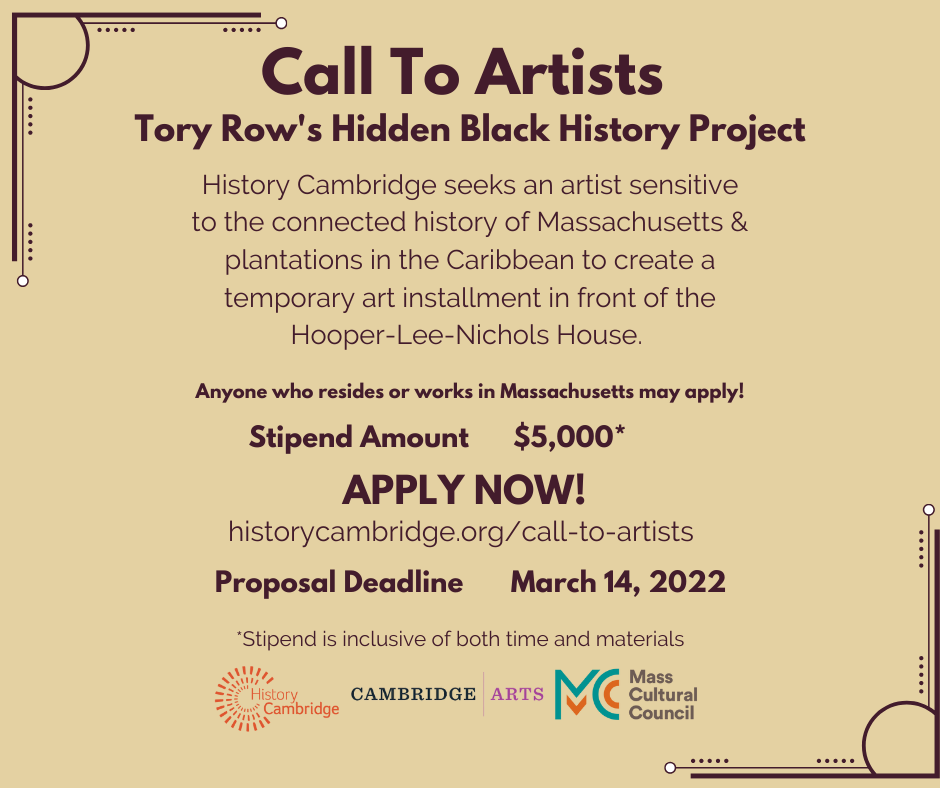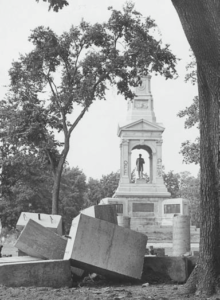History Cambridge will bring an art installation to Brattle Street to focus on neglected Black past
By Talia Franks, 2022

History Cambridge intends to install temporary public art this spring on the front lawn of the Hooper-Lee-Nichols House, 159 Brattle St., to raise awareness of Black history in West Cambridge. The organization seeks an artist who works or lives in Massachusetts and is sensitive to the connected history of Massachusetts and plantations in the Caribbean to create a site-specific, temporary piece of installation art. Funding comes from Cambridge Arts and the Massachusetts Cultural Council.
“This project speaks to the core of History Cambridge – to approach history not just for history’s sake, but to gain a full understanding of this place and its people,” said Marieke Van Damme, History Cambridge’s executive director.
Massachusetts was the center of slave trading in New England as early as 1688, and Cambridge families made their wealth through enslaved labor and included some enslavers – something the owners of the HLN House at the time were complicit in. “It would be a disservice for us to ignore this,” Van Damme said.
“I am thrilled that we are putting out the call for artists – established and emerging – to showcase this history through art,” Van Damme said, thanking Cambridge Arts and the Massachusetts Cultural Council for making the installation possible.

History Cambridge will work with the artist to honor the memory of the enslaved people whose presence on Brattle Street has not been visible. By involving neighbors on Brattle Street through the Tory Row Anti-Racism Coalition, History Cambridge said it aims to change the lens through which one of Cambridge’s most traditionally “historic” areas is seen, both for those close by and for people from other parts of the city, some of whom may not have felt connected or comfortable in the space.
The organization elaborated on its hopes for the installation:
In presenting this history through an artistic lens, History Cambridge seeks to make these narratives accessible and engaging to new audiences. Contemporary art and Black history are unexpected on Brattle Street. The project will make a strong impression on passersby, creating awareness for the artist and this history and inspiring Cambridge to feel surprised, reflective and curious.
For their ideas to be considered, artists must submit two to three paragraphs of textual description, two to three sketches or visual renderings, a rough budget, the timeframe for completion of work, a brief artist bio, curriculum vitae or list of relevant previous work or projects, the proposed mediums and dimensions of the work, and a list of proposed collaborators or fabricators they plan to enlist.
Proposals must be submitted by March 14 to Marieke Van Damme, executive director, at mvandamme@historycambridge.org.
This article was originally published in our “Did You Know?” column in Cambridge Day.






